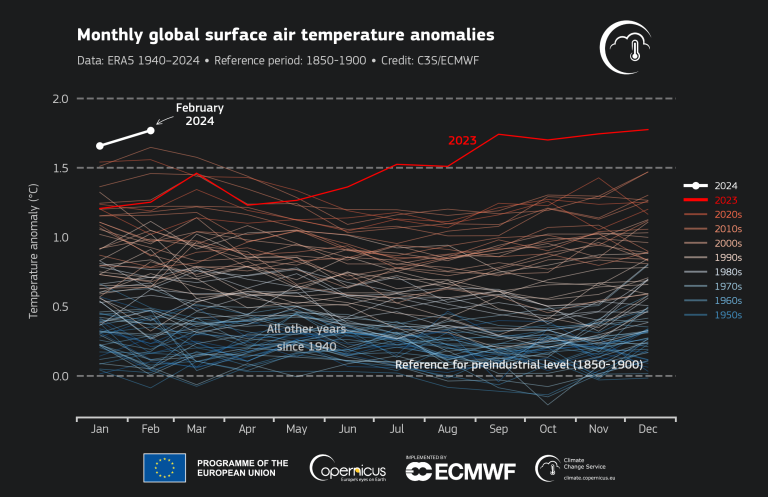
UN warns: ‘Planet is on brink of abyss’

The world had the warmest February on record. February 2024 was 1.77°C warmer than the estimated February average for 1850-1900, the pre-industrial reference period /wmo.int/media/C3S/ECMWF
The period 2014-2023 was the warmest decade on record, exceeding the 1850-1900 average by 1.20°C. UN Secretary-General Antonio Guterres sai


Comments
Ready to join the conversation?
You must be an active subscriber to leave a comment.
Subscribe Today